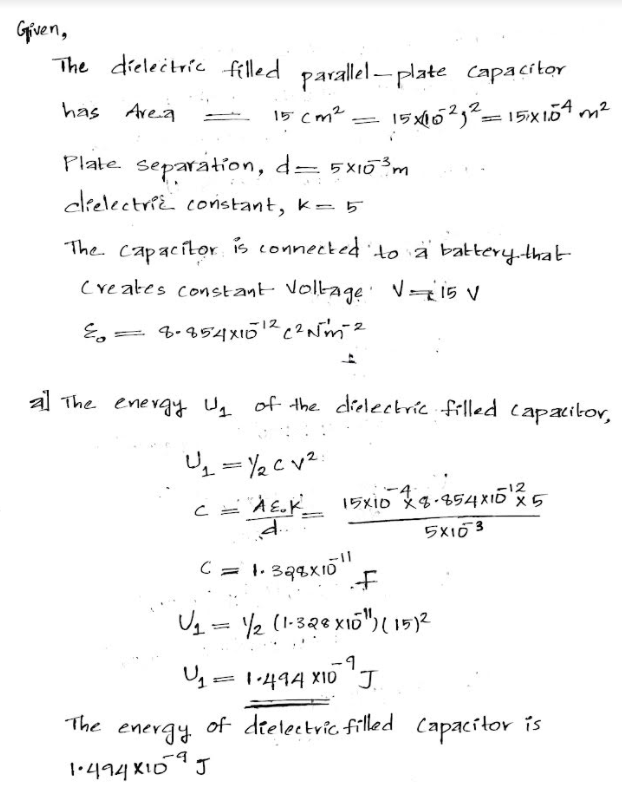A dielectric-filled parallel-plate capacitor has plate area A = 15.0 cm? , plate separation d = 5.00 mm and dielectric constant k = 5.00. The capacitor is connected to a battery that creates a constant voltage V = 15.0 V . Throughout the problem, use €o = 8.85x10-12 C² /N•m² .
Dielectric Constant Of Water
Water constitutes about 70% of earth. Some important distinguishing properties of water are high molar concentration, small dissociation constant and high dielectric constant.
Electrostatic Potential and Capacitance
An electrostatic force is a force caused by stationary electric charges /fields. The electrostatic force is caused by the transfer of electrons in conducting materials. Coulomb’s law determines the amount of force between two stationary, charged particles. The electric force is the force which acts between two stationary charges. It is also called Coulomb force.
I am having troubles making the calculations and have gotten a few different answers for each question and not sure where I am calculating incorrectly. If possible, please show the steps so I may better understand where I went wrong. All answers are in joules (J).
(a). Find the energy U1 of the dielectric-filled capacitor.
(b). The dielectric plate is now slowly pulled out of the capacitor, which remains connected to the battery. Find the energy U2 of the capacitor at the moment when the capcitor is half-filled with the dielectric.
(c). The capacitor is now disconnected form the battery, and the dielectric plate is slowly removed the rest of the way out of the capacitor. Find the new energy of the capcitor, U3.
(d). In the process of removing the remaining portion of the dielectric from the disconnected capcitor, how much work W is done by the external agent acting on the dielectric?


Trending now
This is a popular solution!
Step by step
Solved in 4 steps with 4 images









